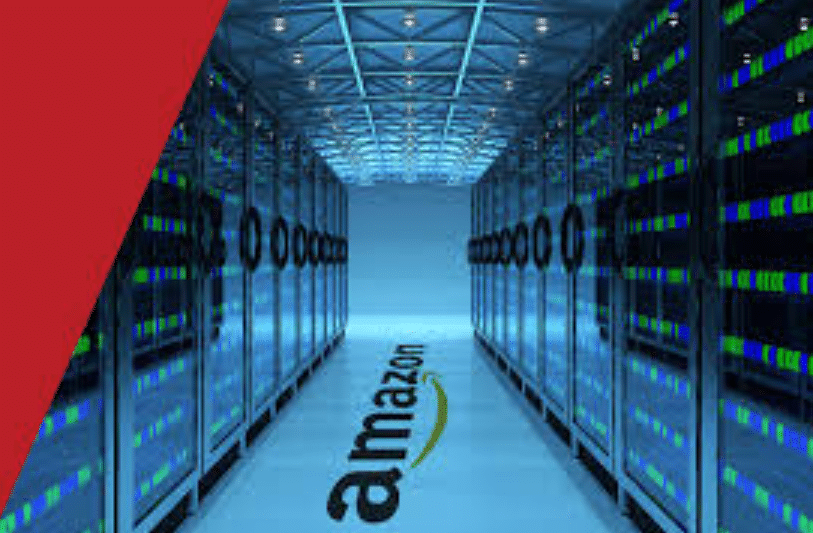Amazon Cloud Server – In the era of digital transformation, cloud computing has become the backbone of modern technology infrastructure. Among the many cloud service providers, Amazon Web Services (AWS) stands out as a global leader, offering a comprehensive suite of services that support everything from startups to large enterprises. At the heart of AWS lies the Amazon Cloud Server, a flexible, secure, and powerful computing environment that has revolutionized how businesses operate, develop applications, and manage data.
This article provides a deep dive into Amazon Cloud Servers, explaining their core features, benefits, use cases, pricing models, challenges, and future trends. Whether you’re a business leader, developer, or IT enthusiast, understanding Amazon Cloud Servers is key to thriving in today’s tech-driven economy.

What is an Amazon Cloud Server?
An Amazon Cloud Server refers primarily to Amazon EC2 (Elastic Compute Cloud), a fundamental service within AWS that provides resizable compute capacity in the cloud. These virtual servers, known as “instances,” allow users to run applications, host websites, analyze data, and perform numerous other tasks without having to manage physical hardware.
Amazon Cloud Servers are designed to be scalable, cost-effective, and secure, offering users complete control over their computing environment while taking advantage of AWS’s global infrastructure.
Core Features of Amazon Cloud Servers
1. Elasticity and Scalability
EC2 instances can be scaled up or down depending on traffic and computing needs. This elasticity is especially useful for applications with fluctuating demands.
2. Wide Selection of Instance Types
AWS offers a broad range of instance types optimized for different tasks—compute-intensive, memory-intensive, storage-optimized, GPU-enabled, and more.
3. Global Infrastructure
Amazon Cloud Servers are deployed across multiple regions and availability zones around the world, ensuring high availability and redundancy.
4. Security and Compliance
AWS follows strict security protocols, including encryption, identity and access management (IAM), firewalls, and compliance with global standards like ISO, HIPAA, and GDPR.
5. Customizable Environments
Users can choose the operating system (Linux, Windows, etc.), install software, configure networking, and manage storage based on their needs.
6. Pay-as-You-Go Pricing
AWS allows users to pay only for the compute time they use, helping reduce operational costs and optimize budgets.
How Amazon Cloud Servers Work
-
Launch an Instance: Users begin by selecting an Amazon Machine Image (AMI), which contains the OS and software configuration.
-
Select an Instance Type: Choose the CPU, memory, storage, and networking capacity.
-
Configure Settings: Set up network settings, security groups (firewalls), IAM roles, and key pairs for secure access.
-
Add Storage: Attach Elastic Block Store (EBS) volumes or use S3 buckets for scalable storage.
-
Deploy and Monitor: Use the AWS Management Console, CLI, or SDKs to monitor performance, scale resources, and manage workloads.
Key Benefits of Amazon Cloud Servers
1. Performance and Reliability
With high-performance CPUs, SSD storage, and global data centers, AWS offers top-tier reliability and speed for demanding workloads.
2. Flexibility and Customization
From development to production environments, users can customize server configurations to fit their unique needs.
3. Integration with AWS Ecosystem
Amazon Cloud Servers integrate seamlessly with other AWS services like RDS (databases), Lambda (serverless computing), S3 (object storage), and CloudWatch (monitoring).
4. Cost Optimization
Features like Spot Instances and Reserved Instances allow users to reduce costs by committing to usage patterns or using spare capacity.
5. Enhanced Security
With VPCs, IAM, encryption tools, and continuous monitoring, Amazon Cloud Servers offer enterprise-grade security features.
6. Developer Tools and APIs
Developers have access to powerful APIs, SDKs, and automation tools like CloudFormation and Terraform for infrastructure as code (IaC).
Common Use Cases
1. Web Hosting
From small websites to large-scale applications, EC2 provides scalable web hosting environments with automatic load balancing and backups.
2. Application Development and Testing
Developers can quickly spin up environments for testing new features, building applications, and automating deployment pipelines.
3. Data Analytics and Machine Learning
With high-performance GPU instances, Amazon Cloud Servers are ideal for big data processing, machine learning models, and real-time analytics.
4. Gaming and Media
Game developers and media companies use AWS for real-time rendering, content delivery, and multiplayer gaming infrastructure.
5. Disaster Recovery
EC2 can serve as a reliable disaster recovery platform with fast failover and global replication.
6. Enterprise IT Infrastructure
Companies can migrate legacy systems to the cloud, reducing costs and improving accessibility and scalability.
Pricing Models
Amazon offers several pricing models to suit various business needs:
-
On-Demand: Pay per hour or second, with no long-term commitments.
-
Reserved Instances: Up to 75% savings for users who commit to one- or three-year terms.
-
Spot Instances: Bid for unused EC2 capacity at a significant discount—ideal for flexible workloads.
-
Savings Plans: A flexible pricing model that applies savings to any EC2 instance usage.
AWS also offers a Free Tier, which includes 750 hours of t2.micro or t3.micro instance usage per month for one year, perfect for beginners.
Challenges of Using Amazon Cloud Servers
1. Complexity
With so many services and options, AWS can be overwhelming for new users. Misconfigurations can lead to performance or security issues.
2. Cost Management
Without proper monitoring, cloud costs can spiral due to unused resources, data transfer fees, or poorly optimized instances.
3. Learning Curve
AWS’s depth and breadth require a steep learning curve, often demanding certification or specialized training.
4. Vendor Lock-In
Migrating large workloads out of AWS can be difficult due to data compatibility and architecture dependencies.
5. Security Responsibility
Although AWS secures the infrastructure, users are responsible for securing their applications, data, and configurations—a model known as shared responsibility.
Best Practices for Using Amazon Cloud Servers
-
Monitor with CloudWatch: Track instance performance and set up alerts for abnormal usage.
-
Use Auto Scaling: Automatically add or remove instances based on demand.
-
Implement IAM Policies: Use least-privilege access to limit exposure to sensitive resources.
-
Take Snapshots: Regularly back up EBS volumes and databases.
-
Tag Resources: Organize instances by project, department, or environment using tags.
-
Use Security Groups and VPCs: Isolate applications in secure virtual networks.
The Future of Amazon Cloud Servers
AWS continues to innovate, and the future of Amazon Cloud Servers looks even more promising. Some notable trends include:
-
Graviton Processors: AWS’s ARM-based chips offer improved performance and energy efficiency at lower costs.
-
Serverless Integration: Combining EC2 with Lambda for hybrid workloads that balance performance and efficiency.
-
Edge Computing with AWS Wavelength and Outposts: Bringing cloud capabilities closer to end users for low-latency applications.
-
Sustainability: AWS is investing in renewable energy and carbon-neutral data centers to make cloud computing greener.
-
AI and Automation: Integration of artificial intelligence for predictive scaling, anomaly detection, and automated maintenance.
Conclusion
The Amazon Cloud Server, primarily represented by EC2, is a cornerstone of modern computing infrastructure. It empowers businesses and developers with unprecedented flexibility, scalability, and control over their computing resources. From launching simple web apps to running massive data pipelines and AI models, AWS makes it all possible with its powerful ecosystem and global reach.
While navigating AWS may require some learning, the benefits far outweigh the initial complexities. With thoughtful planning, proper resource management, and adherence to best practices, Amazon Cloud Servers can serve as the foundation for a resilient, secure, and scalable IT environment.
As we move deeper into the digital age, cloud servers like those from Amazon will not just support innovation—they will drive it.
